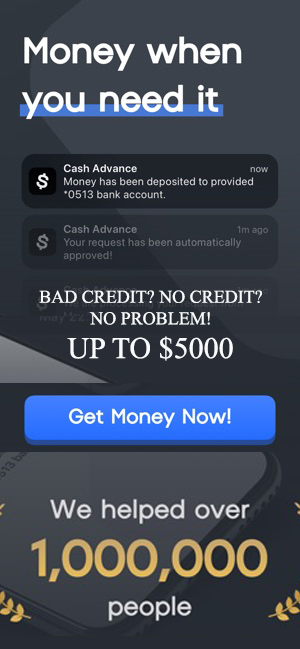Key takeaways
- While opening a 0 percent intro APR credit card can be a smart choice for saving on interest charges as you pay down debt, you can still accrue interest in certain situations.
- If you’ve been charged interest during your introductory period, it’s important to figure out why to reduce the odds of it happening again.
- Closely monitor credit card statements and cardholder terms to avoid unexpected interest charges and develop a plan to pay down debt.
Inflation remains above the Federal Reserves’s 2 percent target, and its impact is being felt by Americans across the country. Many of them have turned to credit cards to deal with their expenses — and their debt. Though the number of people in the U.S. now carrying a balance on their cards is slightly down from last year — 46 percent as of June 2025 as opposed to 50 percent in June 2024, according to Bankrate’s 2025 Credit Card Debt Report— tools like a 0 percent introductory APR credit card can still be helpful in managing debt.
These cards offer new cardholders an introductory annual percentage rate (APR) of 0 percent on purchases, balance transfers or both. This 0 percent APR offer lasts for a set introductory period, typically between 12 and 18 months, with a few cards offering 21 or even 24 months.
But if you recently opened a credit card with a 0 percent intro APR and were surprised to discover you now owe interest on your balances, you may wonder, “Why am I being charged interest on a 0 percent APR?” Find out why you may owe interest on a 0 percent intro APR card and what you can do about it.
Why did I get an interest charge on a 0% APR credit card?
If you apply for and start using a 0 percent intro APR credit card without paying attention to the offer and the details, you could get stuck with more interest than you bargained for. Discover five common reasons why you might now owe interest on a 0 percent intro APR credit card.
1. The intro offer expired
This is one of the most common reasons that balances on 0 percent introductory APR credit cards begin to earn interest. Once the promotional period ends, the ongoing and often variable APR will apply to any balance remaining, as well as all new purchases and balance transfers.
It’s easier than you might think for cardholders to lose track of when their promotional period ends, thinking they have more time to pay off their purchases or balance transfers than they do. Check your credit card statement or card agreement to find out whether your introductory period has ended.
2. The 0% intro APR offer only applied to certain transactions
Another common issue is misunderstanding the kinds of transactions included in the card’s 0 percent intro APR offer. You may have expected that your offer could be used for both purchases and balance transfers, but that isn’t always the case. For example, the Citi Double Cash® Card only offers a 0 percent intro APR on balance transfers for 18 months, not purchases (18.24% – 28.24% (Variable) APR applies after the intro period).
If you make purchases on a credit card with only an introductory offer for balance transfers, those purchases will begin accruing interest at the standard rate. The same goes for transferring debt to a credit card with only an introductory offer on purchases.
Your card agreement will state what kinds of transactions are covered by the introductory offer, as well as the APRs for the transactions that may not be covered.
3. A late payment voided the APR period
When you open a new credit card, you’ll receive a monthly statement at the end of your billing cycle. This credit card statement contains a lot of important information, including charges you made for the previous month and any interest or fees you owe.
It will also include the minimum payment you need to make by the due date each month — even if you’re taking advantage of a 0 percent intro APR offer. Failure to pay at least that amount by the due date may void the terms of your introductory offer.
Bankrate’s take:
If you thought you didn’t have to make monthly payments during your promotional period, you’re not alone. It’s one of the most common mistakes made with a 0 percent APR card. Like many other people, you might have gotten an unfortunate surprise when you saw your next billing statement. Make sure you keep up with your payments to avoid any unexpected charges and cancellation of the intro APR offer. Besides, the most responsible way to use an intro 0 percent APR period is by paying off your debt in full before it expires. That means you should be paying enough every billing cycle to wipe out your debt within the intro period.
4. You missed a deadline
A balance transfer can help you save a lot of money, especially if you transfer your debt from a high-interest credit card to one with an introductory 0 percent APR offer. But depending on the credit card, you may have a limited amount of time within the introductory period to make the balance transfer.
Some credit cards only give you a few months from account opening to make your balance transfers, such as the Bank of America® Customized Cash Rewards credit card, which offers a 0 percent introductory APR for 15 billing cycles on balance transfers made within the first 60 days (then 18.24% – 28.24% Variable APR on purchases and balance transfers]).
The Wells Fargo Reflect® Card is another popular balance transfer card with a balance transfer deadline. The card offers a 0 percent introductory APR for 21 months (with a 17.24%, 23.74%, or 28.99% Variable APR afterward) on qualifying balance transfers, but you must complete your balance transfer within 120 days from account opening for it to qualify.
If you waited too long to transfer your debt to the card, you could simply be seeing standard rates and fees on your credit card statement.
5. You didn’t qualify for the 0% intro APR offer
It’s possible to qualify for a credit card but not the promotional offer. This can happen when you respond to a credit card offer you received in the mail or your inbox. People sometimes assume it’s the same as the offer they see online, but it may not be.
Depending on your creditworthiness, a card issuer may send you a personalized offer that is different from the general offer found online. If you have excellent credit, this can work in your favor, and you may receive a higher welcome bonus or a lower interest rate than advertised. But if you don’t have great credit, you may lose out on select features like the 0 percent introductory offer.
If you assumed your new credit card came with a promotional offer that it didn’t, you will most likely end up paying interest on your credit card balances.
6. The card’s grace period is voided
Most issuers offer a grace period — you won’t be charged interest on new purchases if you pay your balance in full by the due date. But if you are carrying a balance, you’ll start accruing interest on your unpaid balance and any new purchases. This unpaid balance could include a balance from a balance transfer. So any new purchases would start accruing interest immediately if you are paying down debt from a balance transfer.
What do you do when you owe interest on a 0% APR card?
You have a few options if you owe interest on a 0 percent APR card. If you’re charged interest on a 0 percent introductory APR card, the first step is to find out why. Check out what you need to do when you start accruing unplanned interest.
Check your statement for interest charges
Start by checking your credit card statement. Make sure to read and understand the card’s fine print and cardholder agreement to ensure you followed the terms and conditions. You can also contact your card issuer and ask.
Decide on a strategy to pay down your balance
Once you’ve verified that the interest charges are accurate, plan how you’ll pay off this credit card debt. This may be as easy as opening a new 0 percent APR card, transferring the balance over and paying that card down. You can use a credit card payoff calculator to create a debt payoff plan for that new card.
However, if you already carry a lot of debt, you may not qualify for a new credit card. If that’s the case, you may need more help than a calculator and budget can provide. Other options include:
Keep in mind:
No matter which strategy you choose, it could be beneficial for you to seek out a credit counselor. A licensed credit counselor from an accredited non-profit can help you come up with a plan or simply give you advice on how to move forward.
The bottom line
With responsible use, 0 percent intro APR credit cards can help you strategically save money on upcoming purchases or pay off past debts — but only if you can avoid interest charges. And since current credit card interest rates sit at an average of more than 20 percent, one of these cards could save you hundreds of dollars a year or more, as long as you play by the rules found in your credit card agreement.
If you recently opened one, only to discover you still have to pay interest charges, you don’t have to feel discouraged. By knowing why this happened and coming up with a plan to pay down your debt, you can avoid this situation in the future.
Frequently asked questions about owing interest on a 0% APR card
The Bank of America content in this article was last updated on Aug. 27, 2025.
Why we ask for feedback
Your feedback helps us improve our content and services. It takes less than a minute to
complete.
Your responses are anonymous and will only be used for improving our website.
Help us improve our content
Read the full article here
















